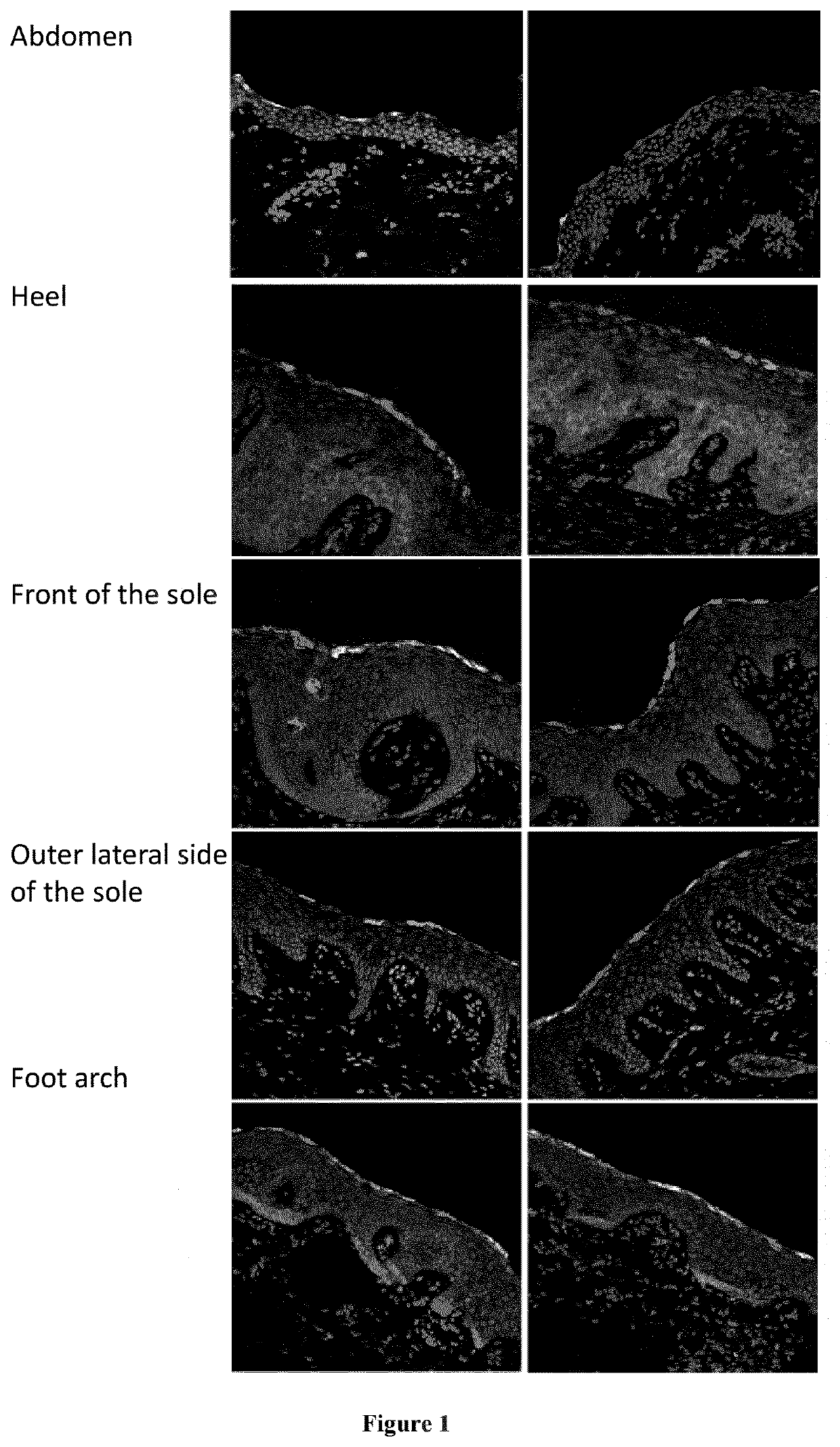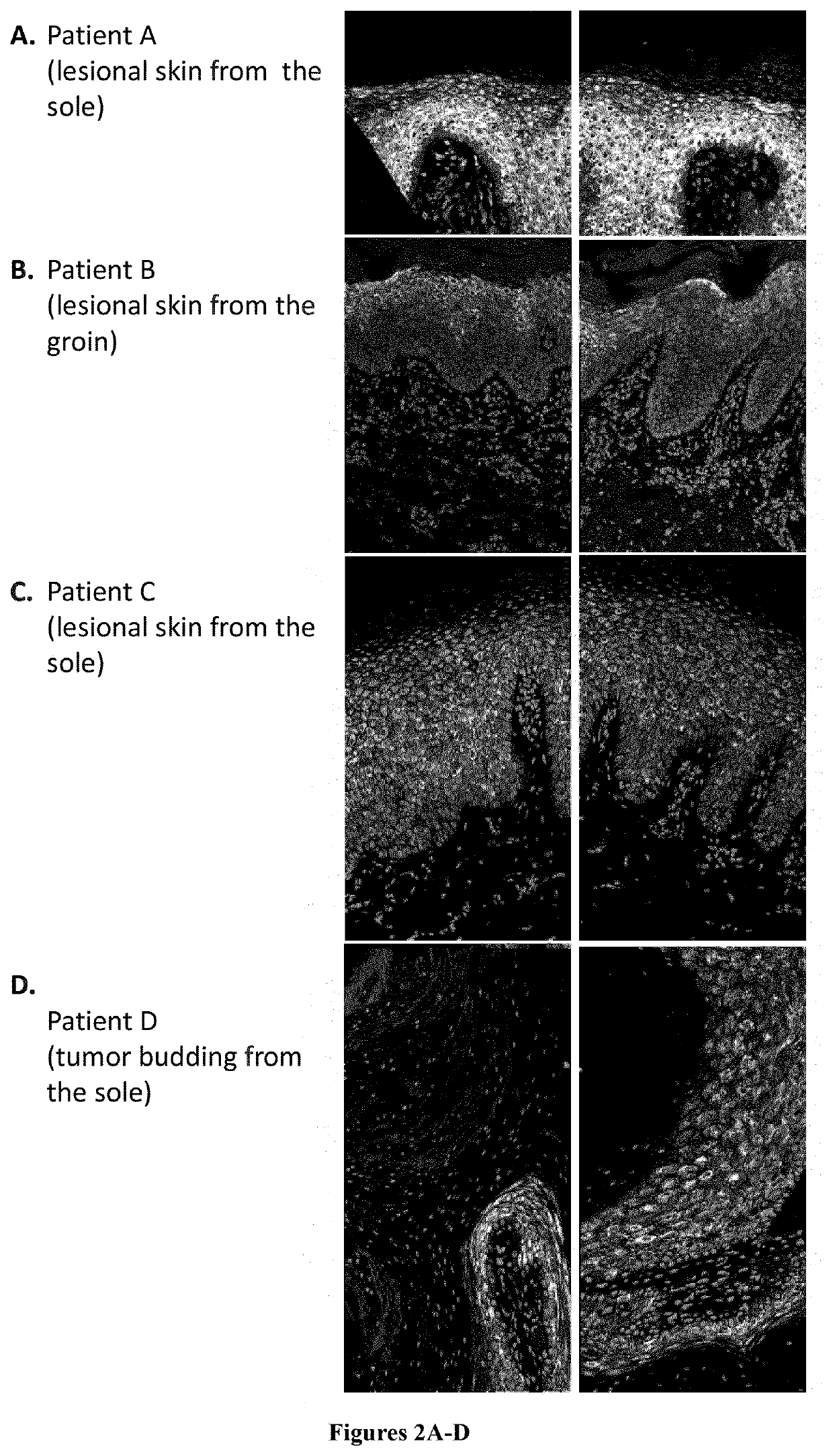Methods and pharmaceutical compositions for the treatment of olmsted syndrome
a technology of olmsted syndrome and compositions, which is applied in the direction of drug compositions, pharmaceutical delivery mechanisms, medical preparations, etc., can solve the problems of insufficient phenotype of patients, inability to meet patients' specific and satisfactory treatment, and variable pain and itching,
- Summary
- Abstract
- Description
- Claims
- Application Information
AI Technical Summary
Benefits of technology
Problems solved by technology
Method used
Image
Examples
example 1
[0017]Material & Method
[0018]mTor signaling activates S6 kinase, which phosphorylates Ser235, Ser236, Ser240 and Ser244 of the ribosomal protein S6 (RPS6). Healthy skin and lesional skin from five OS patients were investigated by immunostaining using an anti pSer240 / 244 RPS6 antibody (#5364 Cell Signaling). In addition, p-RPS6 was investigated in cultured primary keratinocytes (proliferative conditions) from healthy individuals and from OS patient C by western-blot analysis (#5364 Cell Signaling).
[0019]Results
[0020]Staining was restricted to the stratum granulosum in abdominal skin from healthy controls, whereas staining extended to all layers of the epidermis from the sole of a healthy control although weaker (FIG. 1). Increased staining extending to all epidermal layers was observed in OS lesional skin mainly in patients A to D (FIG. 2). Increased RPS6 phosphorylation indicates abnormal mTOR pathway activation in OS lesional skin. In addition, increased p-RPS6 levels in OS patient...
example 2
[0021]I—Clinical Observation
[0022]The patient is an 11 year-old girl who displayed at birth superficial peeling of her toes without hyperkeratosis, nor blistering of her skin.
[0023]Plantar keratoderma developed after she started walking at 1 year of age. It was initially distributed to islands on pressure points but gradually extended to the entire plantar surface. Plantar skin became hyperproliferative and budding, covered with dramatical hyperkeratosis overtime.
[0024]Plantar keratoderma was associated with intense erythermalgia diagnosed at 3 years, manifesting by severe itch, burning pain, erythema and warmth in the extremities (hands, feet and ears), and venous dilatation.
[0025]Because of extreme foot pain, she walked on knees and hands which resulted in localized palmar keratoderma, and has been using a wheelchair since the age of 3.
[0026]Her finger and toe nails were thin and brittle.
[0027]Her hair was fine, dry, curly and unmanageable.
[0028]We confirmed the diagnosis of sever...
PUM
| Property | Measurement | Unit |
|---|---|---|
| clinical heterogeneity | aaaaa | aaaaa |
| time | aaaaa | aaaaa |
| body weight | aaaaa | aaaaa |
Abstract
Description
Claims
Application Information
 Login to View More
Login to View More - R&D
- Intellectual Property
- Life Sciences
- Materials
- Tech Scout
- Unparalleled Data Quality
- Higher Quality Content
- 60% Fewer Hallucinations
Browse by: Latest US Patents, China's latest patents, Technical Efficacy Thesaurus, Application Domain, Technology Topic, Popular Technical Reports.
© 2025 PatSnap. All rights reserved.Legal|Privacy policy|Modern Slavery Act Transparency Statement|Sitemap|About US| Contact US: help@patsnap.com



